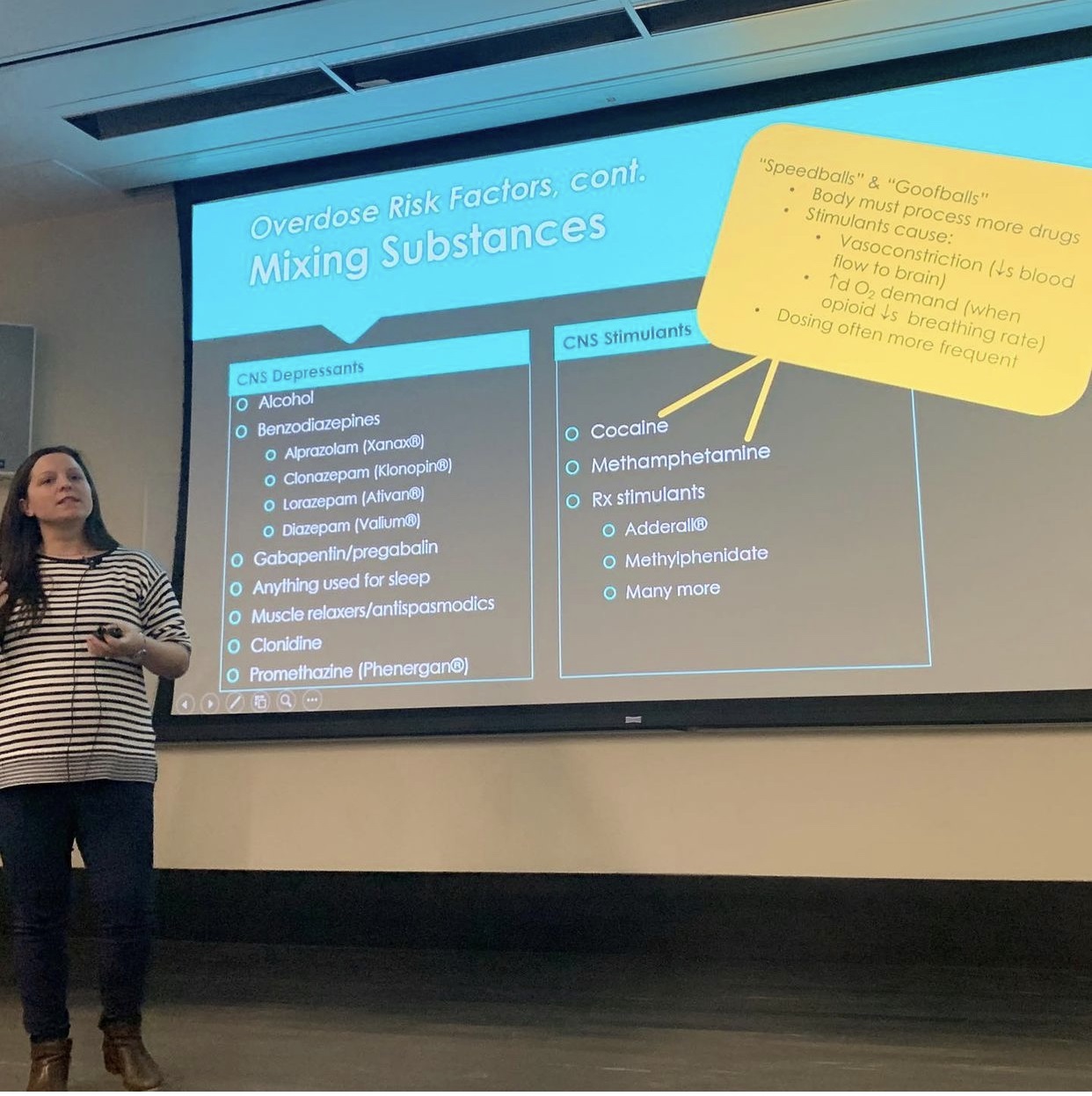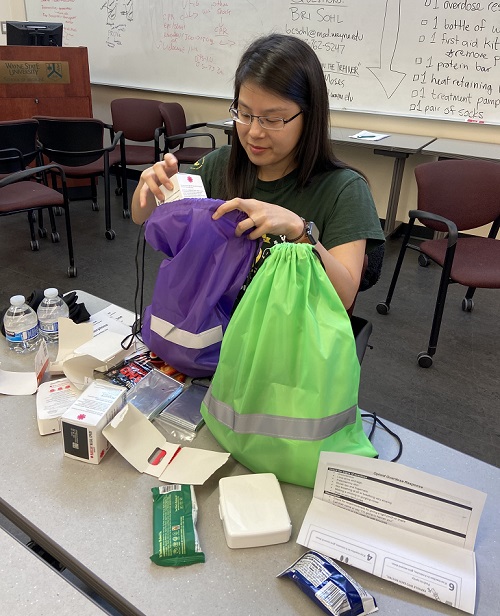The students and faculty behind the Wayne State University School of Medicine’s Detroit vs. Addiction medical student organization have released a paper that could serve as a road map for other medical schools wishing to build similar organizations.
“Building a strong foundation from the ground up: the impact of a medical student substance use disorder organization on curriculum and community,” is published in the Journal of Addictive Diseases.
“The catalyst for this paper was seeing how much the overdose epidemic grew even within the last year during COVID. The need to provide resources to medical students during this era of increasing substance use and COVID has become more evident and urgent than ever,” said Detroit vs. Addiction Student Advisor and Class of 2024 medical student Luz Nagle. “Additionally, it was evident from our work with medical students at our school and others across the country that this was something they wanted, and DvA has been an amazing blueprint of a unique way medical schools can provide these opportunities. After our success, we knew it was time to share how we did it for other medical schools to hopefully follow suit.”
Detroit vs. Addiction, or DvA, was founded in 2017 to encourage the initiation and maintenance of opioid addiction treatment by equipping the community with readily available resources. By working with other health professionals throughout the community, they aim to improve the lives of those struggling with addiction through volunteerism and research. They also educate the medical student body on issues surrounding the opioid epidemic to provide the physicians-in-training with a better understanding of substance use disorders. DvA’s initiatives include a needle exchange program, harm reduction, BAM: Busting Addiction Myths and research.

The organization was founded by students to combat the increasing rates of substance use disorders, or SUDs, accidental overdoses and associated high mortality rates, and the urgent need for well-trained physicians who grasp these complex issues and help struggling patients.
Nagle is the immediate-past president of the organization and medical school representative for the WSU Opioid Task Force. She co-wrote the paper with DvA Student Advisor Tabitha Moses, former Vice President Anirudh Chitale, past-President Jody Chou and creator Irvin Lien, M.D. ’20, as well as Department of Psychiatry and Behavioral Sciences Assistant Professor Eva Waineo, M.D., and Professor and Gertrude Levin Endowed Chair in Addiction and Pain Biology Mark Greenwald, Ph.D., who serve as faculty advisors.
Dr. Waineo and Professor of Internal Medicine Diane Levine, M.D., were especially supportive of implementing much of the DvA-led educational efforts into the school curriculum.
“There are many great accomplishments DvA has had, but one we are most proud of is helping to implement opioid overdose prevention and response training as part of the curriculum for first-year and third-year medical students, and ensuring that all medical students graduate with the appropriate training to be able to prescribe medications for opioid use disorder,” Moses said. “We are also extremely proud of our interactive website that has been successfully used by patients for locating resources. Many of us have had colleagues within the school tell us how our DvA educational sessions and resources have benefited them and their patients and improved their ability to provide compassionate, evidence-based care to patients who use drugs.”

The success has also provided an understanding of how much the organization’s board members can, and should, take on while pursuing a medical degree.
“Our biggest challenge has been having to be realistic about the commitment we could ask from our medical student board members. As a new organization with big dreams and an important mission, it was often difficult to juggle these aspirations with the demands of being a medical student. Having to reel in on some of these projects and trying not to spread ourselves too thin was often a struggle, especially when our board members are passionate about many things and are involved in other student organizations on top of trying to succeed in school,” Nagle said.
One of the organization’s ongoing goals is to eliminate the stigma that surrounds substance use disorders.
“Before medical school, I had already seen how SUD affected people I cared about. However, being in medical school made me more aware that students need to take control of their education if they want to learn more about this field. Luckily, at the School of Medicine, DvA and faculty like Dr. Greenwald and Dr. Waineo have been able to provide these opportunities to students who otherwise would be lost to health care’s incorrect perspective of SUD,” Nagle said. “Since starting my rotations in the hospital, my work with DvA has made me more aware of my colleagues’ perceptions of certain patients and empowered me to not only say something but to be more comfortable to do so than I would have had it not been for DvA. I am not only able to provide accurate resources to these patients, but also provide them with the feeling of having an ally in a team of physicians they might otherwise feel distrust. We know that these changes in knowledge and awareness are not just isolated to DvA members; many of us have had peers tell us about the ways that DvA-led initiatives have improved their attitudes toward and awareness about people who use drugs.”
Students interested in learning more about the treatment of substance use disorders and harm reduction may shadow physicians at the Tolan Park Research Clinic to learn about the field of addiction medicine and interact with patients. DvA members can also volunteer to help with staffing and organization resources for a local mobile harm reduction program that includes syringe exchange, and with other student organizations such as the Robert R. Frank Student Run Free Clinic to provide resources when needed at clinic or at health fairs.
“We are working on getting more of our in-person volunteering opportunities up and running since many of our partnerships with schools and facilities were young when COVID hit. We hope this year will see our volunteering opportunities grow and the seminars we offer be in-person again,” Nagle said.